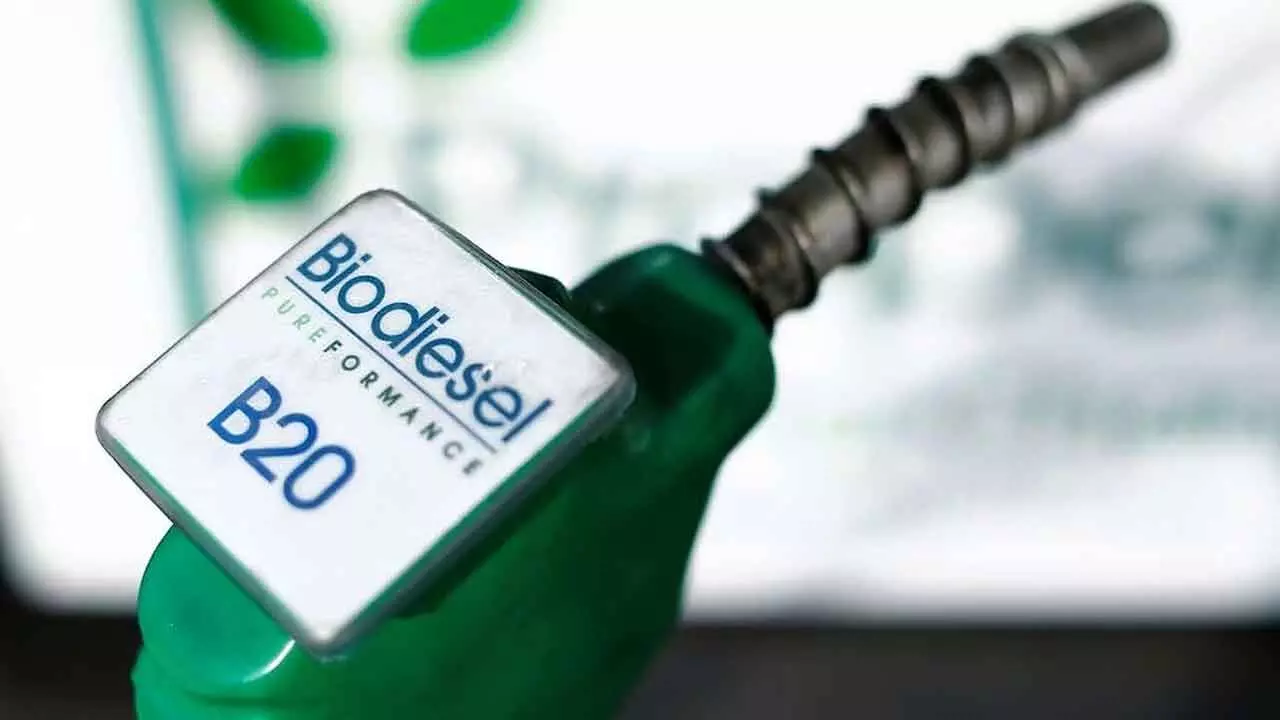India Saved Rs 1.06 Lakh Crore In Foreign Exchange From Biofuel Blending
The country will drive 25 per cent of global energy demand in the next 20 years
India Saved Rs 1.06 Lakh Crore In Foreign Exchange From Biofuel Blending

SAF can be produced as e-fuels, also called power-to-liquid fuels (PtL), from green hydrogen and CO2 collected from industrial plants and other point sources – including direct air carbon capture (DACC) as the technology matures.
Clean energy is a sunrise industry that India aspires to espouse, particularly given the access to biomass from farmland and other sources at scale that today are often wasted and burnt that in turn pose air-quality hazards.
Converting this biomass to Sustainable Aviation Fuel (SAF) instead will enable India to draw on its untapped potential and become a global leader in SAF production. Sufficient sustainable feed stock will suffice to fully support the domestic aviation market, as well as providing surplus for export.
Adopting SAF as the primary fuel of the Indian aviation industry is an ambitious endeavour, one that does not come without its challenges. Overcoming these will require great coordination and collaboration in the aviation and energy ecosystem, which have so far shown great willingness to build a new industry for the country.
The world's third largest oil importing and consuming nation saved Rs. 1.06 lakh crore in foreign exchange during the last decade by mixing biofuels in petrol, said union Oil Minister Hardeep Singh Puri.
Speaking at the CII Bioenergy Summit, he said that the percentage of ethanol, extracted from sugarcane and other biomass, blending in petrol shot up from 1.53 per cent in 2014 to 15 per cent.
Encouraged by these results, the government has advanced its target to 20 per cent blending for 2025, he said.
"From 2014 to August 2024, ethanol blending (in petrol) has generated foreign exchange savings of Rs. 1,06,072 crore, reduced CO2 emissions by 544 lakh tonnes, and achieved crude oil substitution of 181 lakh tonnes," he said. Additionally, the government has set ambitious targets for SAF, aiming for one per cent blending in 2027 and two per cent in 2028, positioning India as a leader in bio-mobility.
Emphasising on India's robust economic growth, he said the country will drive 25 per cent of global energy demand over the next two decades. Bioenergy will be crucial in meeting this demand while correspondingly advancing climate goals and rural development.
Currently valued at $44 billion (as per Wood Mckenzie), the minister said that the bioenergy market is projected to grow to $125 billion by 2050. If global net-zero targets are achieved, this figure could surge to $500 billion, he added. India has more than 750 million tonnes of available biomass, with about two-thirds being used for domestic purposes such as cattle feed and compost fertiliser.
The International Energy Agency (IEA) forecasts a growth potential of 3.5 to five times for biofuels by 2050 due to net zero targets, presenting a substantial opportunity.
Aviation produces about three per cent of total CO2 and 12 per cent of transport emissions globally. Recent research indicates, however, that its total impact on climate warming could be two to four times larger due to additional non-CO2 pollutants and overall radiative forcing mechanisms.
The aviation industry had in 2009 committed through the AirTransport Action Group (ATAG) to a reduction pathway to 50 per cent of 2005 emissions by 2050.
Traditional approaches to curb aviation emissions, such as fleet renewal, efficiency improvement or intermodal integration, will not be sufficient by themselves to reach the ATAG long-term 2050 CO2 reduction target at a national or international level.
Fully zero-carbon solutions relying on renewable electricity sources, such as battery electric and green hydrogen-powered commercial aircraft may not come to market at scale before 2030 – or, more likely, decades later.
Even electric and hydrogen next-generation solutions are unlikely to cover flights beyond 1,500 kilometres. Most observers acknowledge that sustainable aviation fuel (SAF) will be crucial in reaching net-zero emissions targets by 2050.
Using technology that is available today, SAF can be synthesized from renewable feedstock such as municipal and agricultural waste and forestry and agricultural residues. In addition, SAF can be produced as e-fuels, also called power-to-liquid fuels (PtL), from green hydrogen and CO2 collected from industrial plants and other point sources – including direct air carbon capture (DACC) as the technology matures. Depending on the feedstock and technological production pathway, SAF can in theory be up to 100 per cent less carbon-intensive over its life cycle when compared to conventional fuel. The technological pathways and feedstock assessed in this report yield 60 per cent or more GHG savings compared to fossil fuels.
All aircraft and airports today can handle the current maximum certified blend of 50 per cent SAF, through seven ASTM certified production pathways. Around the world, more than 300,000 flights are powered by SAF.
SpiceJet operated India’s first domestic biofuel test flight on a 25 per cent blend of SAF in 2018. The Centre for Military Airworthiness and Certification (CEMILAC) piloted SAF use across IAF’s AN-32 fleet as a milestone towards expanded use in India.

